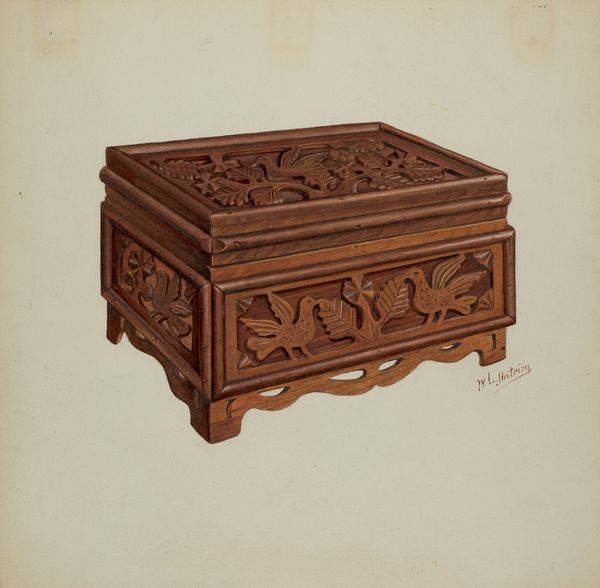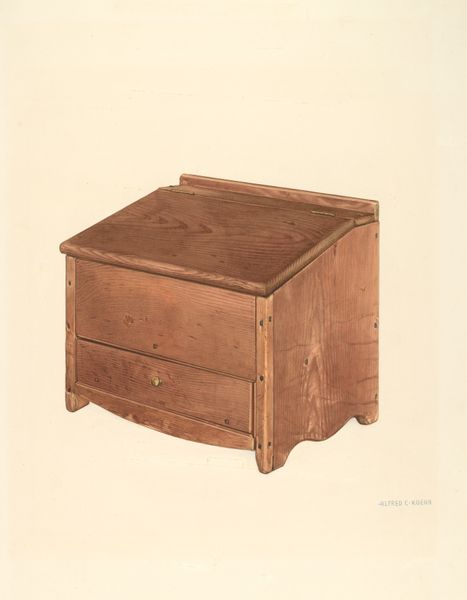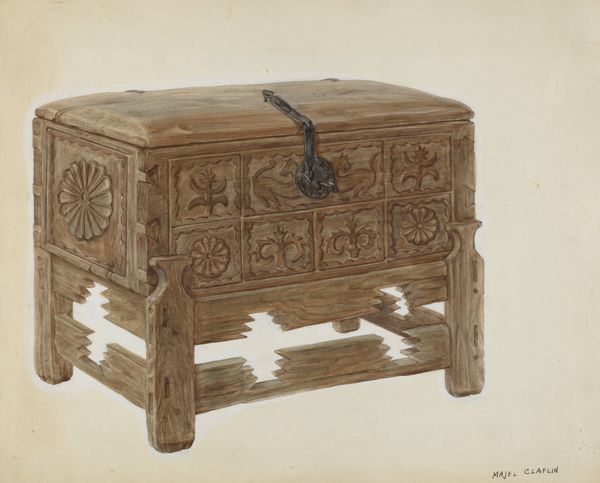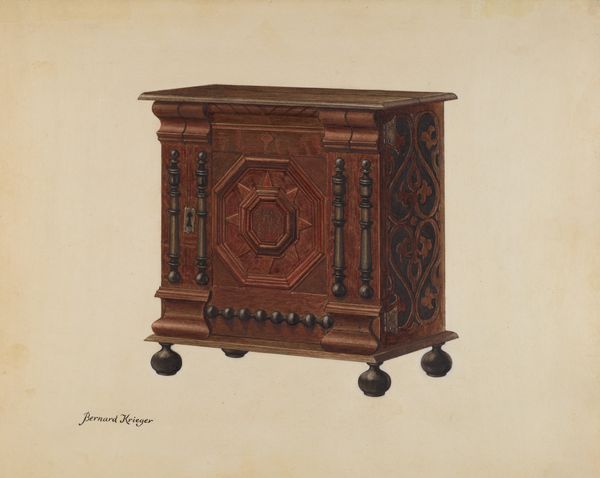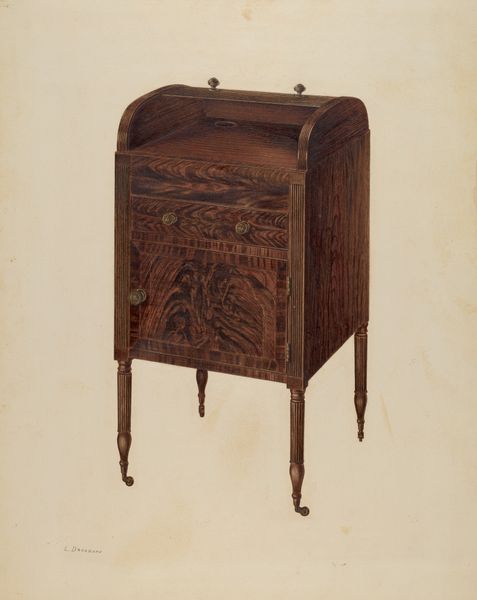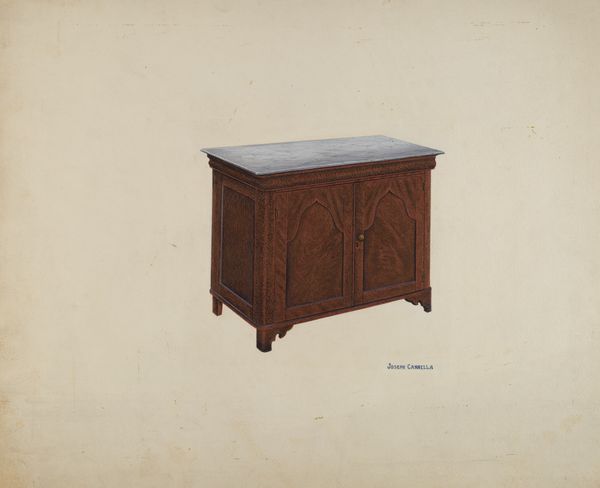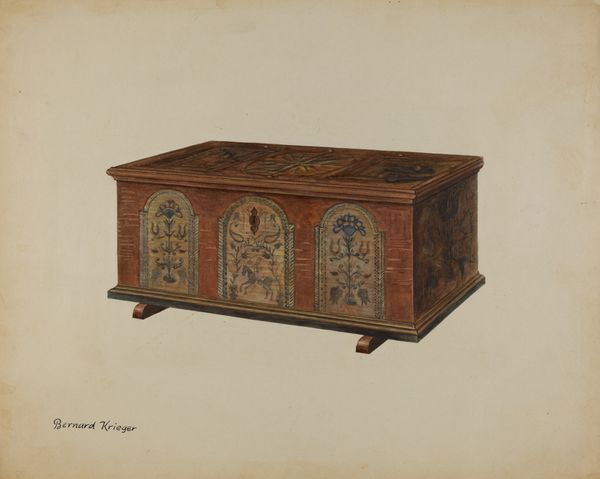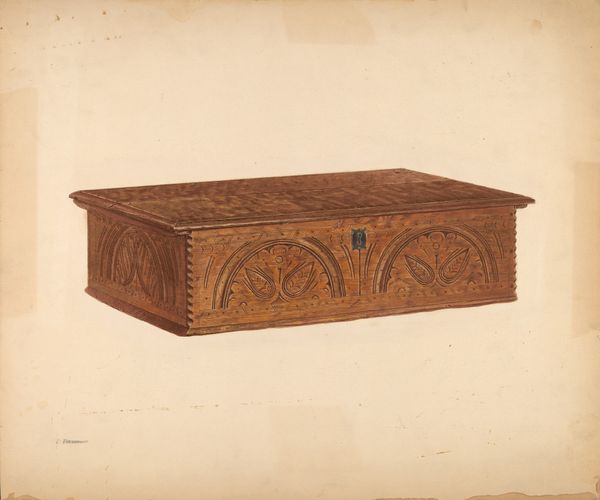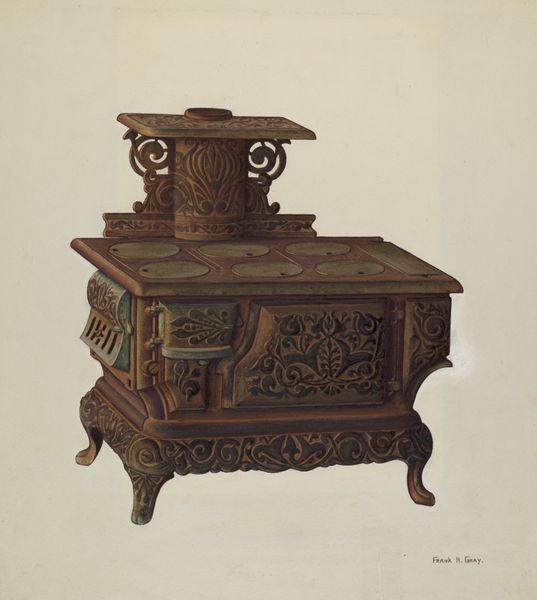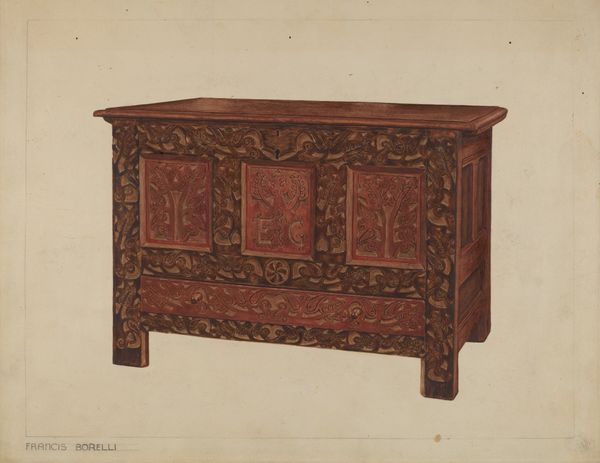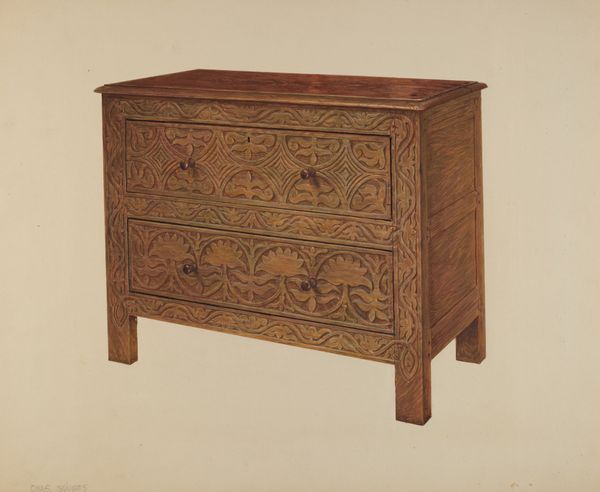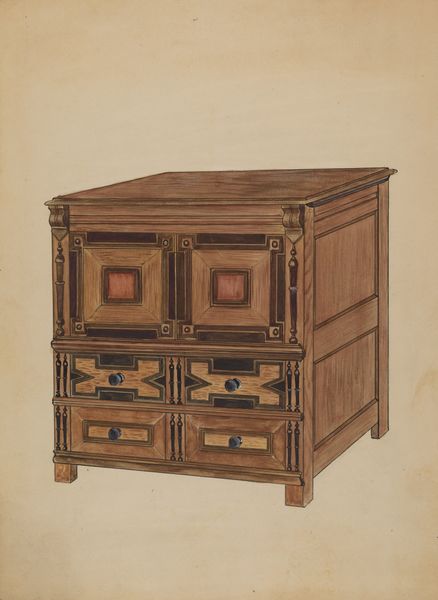
drawing
#
drawing
Dimensions: overall: 35.8 x 45.6 cm (14 1/8 x 17 15/16 in.) Original IAD Object: 6" high; 8 1/2" wide; 8 1/2" long
Copyright: National Gallery of Art: CC0 1.0
Editor: So this is Edmond Lorts' drawing, "Cast Iron Toy Stove" from around 1939. It feels almost melancholy to me, this little object drawn with such care. It really makes you wonder, what significance did this stove hold? Curator: Exactly. The act of depicting this specific object, rendered with such meticulous detail, imbues the stove with meaning far beyond its simple function. It transforms the commonplace into something iconic, inviting reflection on childhood, domesticity, perhaps even a yearning for simpler times. What visual cues stand out to you? Editor: The sunburst patterns on the oven doors are quite striking. They remind me of those early modern design motifs. Curator: Good eye! Those sunbursts evoke a powerful symbolism. Throughout history, the sun has represented life, energy, and the center. Do you think its placement on a stove door, essentially the entry point to sustenance, might carry symbolic weight? Editor: Definitely! The sunburst feels hopeful. But a stove...isn't that traditionally linked to a woman’s space, the kitchen? Maybe it speaks about how women were seen at the time, always within the domestic space, the kitchen. Curator: That's perceptive. Think also about play. Toy stoves were implements for learning domestic roles. Does the image elicit ideas about prescribed gender roles or nostalgia, or maybe both? Editor: It does both. It’s interesting to think about an object so weighted with meaning presented as simply a toy. I hadn't considered the layers of symbolism it carries. Curator: Indeed. By recognizing these recurring visual motifs and their potential interpretations, we uncover deeper cultural narratives embedded within seemingly simple objects. Editor: Thank you! Now I understand that an apparently simple drawing might say a lot about its historical period, and, perhaps, a deeply psychological vision of everyday life.
Comments
No comments
Be the first to comment and join the conversation on the ultimate creative platform.
